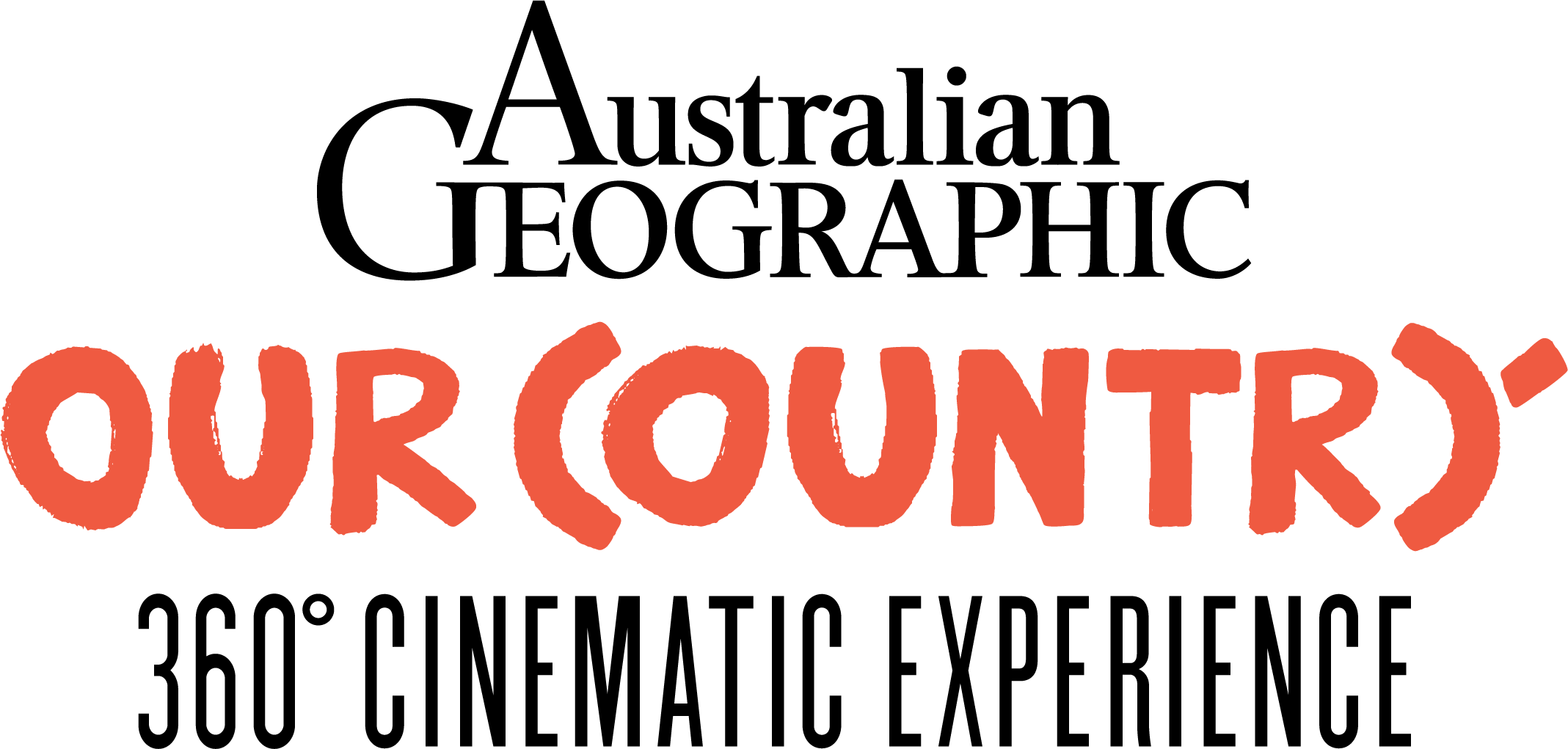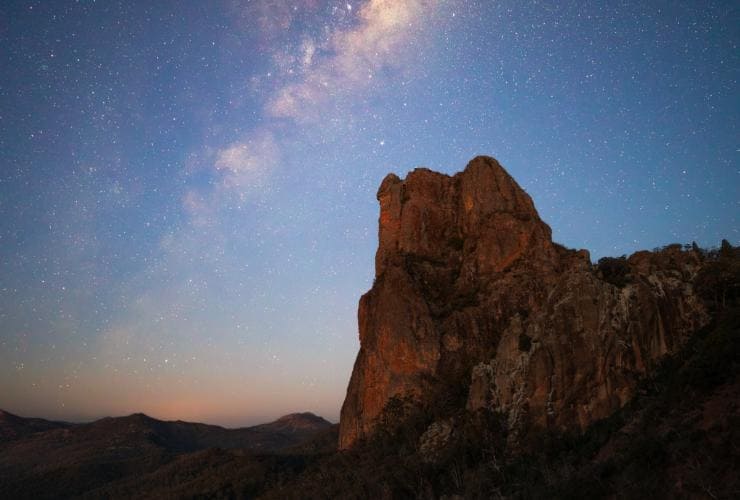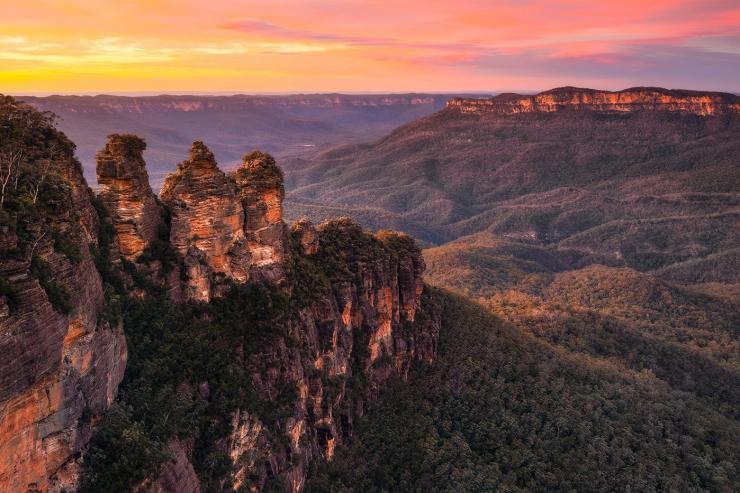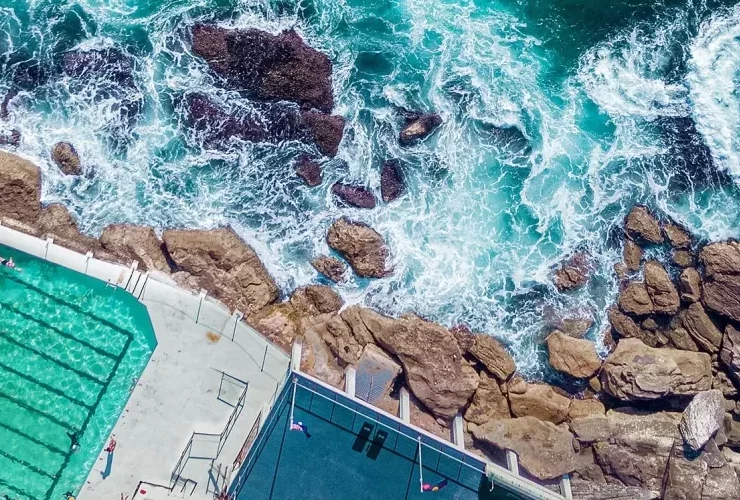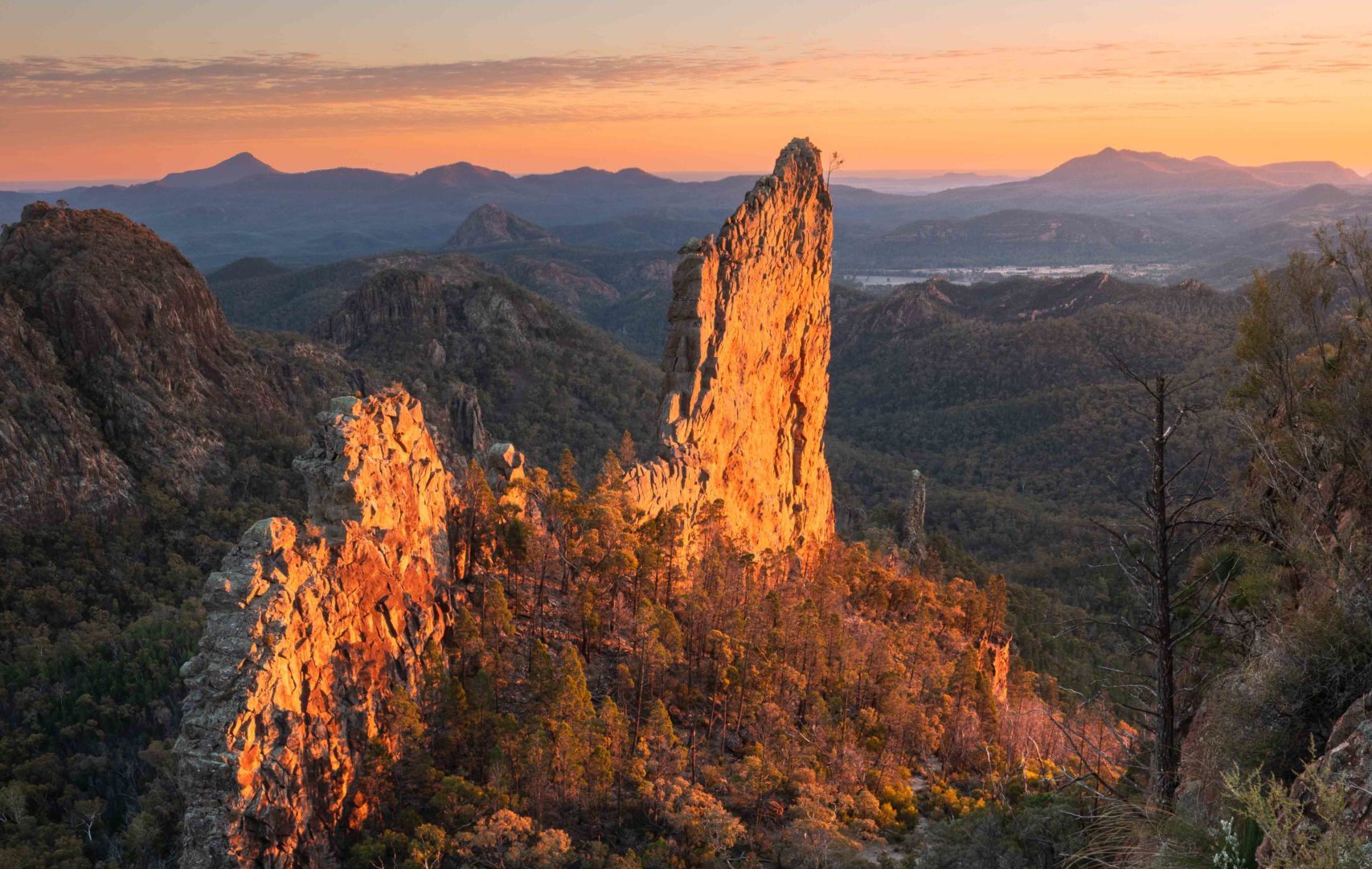
Travel Warrumbungle National Park – warrumbungle Rock Stars
Words: Ken Eastwood | Images: Bill Hatcher
My scream rips through the air. One hundred metres up Crater Bluff, one of the most prominent volcanic features in Warrumbungle National Park, I am fumbling for a finger hold on a large overhanging block, not watching what my feet are standing on. A chunk of stone the size of an esky suddenly gives way under me, plummeting towards two rock climbers below. As my feet swing temporarily into space and I catch myself on the overhanging block, I scream a frightened warning, “RO-O-O-O-CK!” and the boulder plummets between them, smashing into about a zillion pieces, the explosion ricocheting around the valley.
Like many who come to Warrumbungle National Park today, I first visited this exciting landscape as a child. Back in the 1970s and ’80s, it was the main scenic attraction west of the Blue Mountains in New South Wales and played host to 80,000 people a year.
It receives less than half that number today. Situated about 35km west of Coonabarabran and some 140km north-east of Dubbo, the 23,311ha park is criss-crossed by sensational bushwalks and dominated by a series of rugged volcanic outcrops.
As an impressionable eight-year-old boy, this landscape inspired the beginnings of what would become a lifelong love of Australia’s wild places. I remember emus bolting across the road, kangaroos foraging in the camping ground and a jagged skyline of mountains and soaring cliffs sprouting impossibly from the ground. My younger brother’s 15km trek along the classic Grand High Tops walk at age five became fixed in family folklore, and despite the haze of time, I can still recall the rock climbers who hung high on Belougery Spire, their ropes pulsing like veins. I remember thinking that I wanted to do that one day.
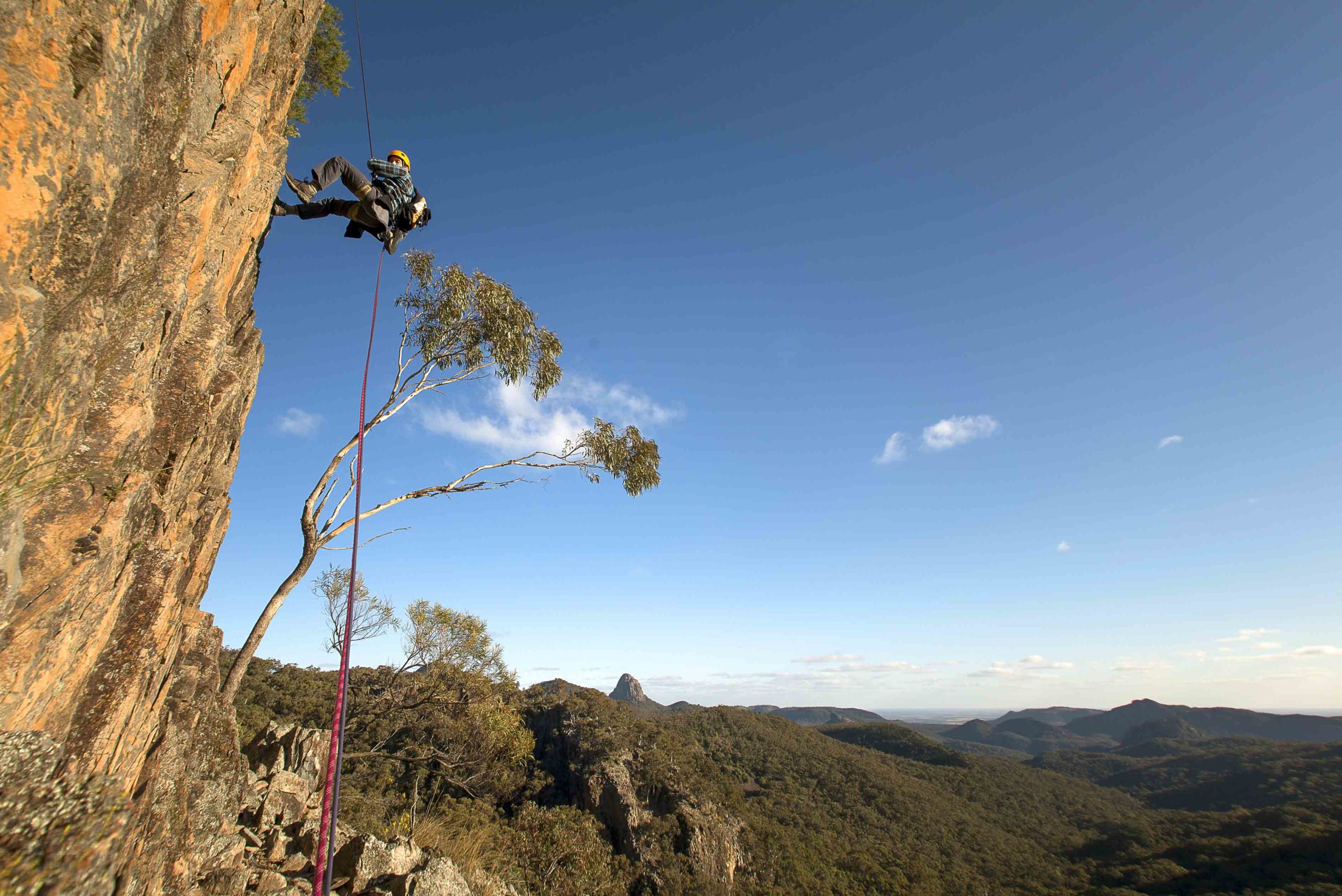
Writer Ken Eastwood abseils from a 190m of Crater Bluff.
Since the 1930s it has been known as one of the state’s best bushwalking destinations, and some 30km of tracks scramble over the striking formations. The best walks among them are Belougery Split Rock, Macha Tor and the iconic Grand High Tops, all of which offer glorious views and take hikers past grazing kangaroos and woodlands alive with eastern spinebills, honeyeaters, currawongs, wattlebirds and the flashes of firetails.
Dot Butler, aka the “barefoot bushwalker”, and a former Australian Geographic Adventurer of the Year, climbed in the Warrumbungles in the early 1930s. She was one of the toughest of the Blue Mountaineers climbing group, and later the Tiger Walkers, a group that achieved phenomenal off-track bushwalking feats, including a legendary ascent of Crater Bluff with Dr Eric Dark in 1936.
With none of today’s safety devices, the two were simply roped together – Dot in bare feet and with no means of preventing a fall as she climbed the cliffs, hanging onto sticks of vegetation no thicker than a pencil.
Their actual route has still not been ascertained, but Dot’s description at the time was vivid: “Inch by inch we edged along, clinging to scarcely perceptible ledges of grey, lichen-covered rock, feeling our way in those places where we couldn’t turn to see for fear of upsetting our balance by a fraction of an inch, pausing now and then on some relatively safe ledge to draw a deep breath, for the suspense kept us so tense we hardly dared breathe, and then on again, high above the giant eucalyptus, which, in the valley below, appeared to our wide-open eyes no bigger than matchsticks; and always the huge eagles, wheeling aloft, surveying us from their untamed heights with fierce, contemptuous eyes.”
One of the most dedicated bushwalkers and climbers in the Warrumbungles over the past 40 years is Roger Row, who was also the park’s longest-serving ranger. Despite a leg injury, he bounds across scree slopes, over fallen trees and along rocky tracks to show me Cathedral Arch, a 10m-high rock feature with a shining white gum growing on top. Formerly a jackaroo, Roger was just passing through the area when he became hooked on its craggy spires. He soon became a member of the Coonabarabran Bushwalking Club. “I didn’t even know about the Warrumbungles,” he says. “I’ve now been over 97 per cent of the park. I’ve been up every peak.” Having been involved in plenty of daring park rescues, and often finishing his own adventures after dark, Roger thrives in all Warrumbungle weather extremes – even when the mercury drops below zero. “We’ve been climbing on Belougery Spire with waves of snow and sleet over us,” he says.
Scared off by its extreme reputation, today’s lycra-wearing, sporty rock climbers rarely lay a hand on the craggy faces of the Warrumbungles. But in years gone by, some of the biggest names in Australian climbing ventured here: the legendary Blue Mountaineers (aka the Katoomba Suicide Club) in the ’30s, Bryden Allen and John Ewbank in the ’50s and ’60s, and Australian Geographic Society trustee and Everest mountaineer Greg Mortimer in the early ’70s. With many a story to tell between them, they gave the routes chilling names – Heartstopper and Vertigo among them.
Bryden didn’t pull any punches when he wrote the introduction to one climbing guide: “On all major routes, you will have a high probability of losing the route and spending the night on the face. Most routes contain some superb quality rock as well as some dubious chunder. One is likely to freeze in a biting wind in early morning then suffer from heat exhaustion in mid-afternoon.” I know what he meant. On one of my climbs the temperature dropped to about 4°C in the shade and an icy southerly froze my fingers into useless sticks. I couldn’t bend them, let alone grip the refrigerated rock.
Today, scaling the rock gracefully above me, alternating between climbing barefoot and wearing his ultra-grippy climbing shoes, is Eric Butler, grandson of barefoot climber Dot. The young, sandy-haired instructor is already a veteran on these cliffs, having first climbed here when he was nine. “To be honest, I just thought it was the scariest thing ever,” he says. “My older brothers would have to talk me into it.”
Now Eric is more than at home here, climbing calmly and doling out sage advice as he goes, such as warnings to keep away from the orange-coloured rock. “It’s the opposite of the Blue Mountains. The chocolate colour is the good-quality rock here.”
The stone rib we are climbing on Crater Bluff stretches up and over the Grand High Tops and continues on to form The Breadknife 500m away. From a sunny ledge the size of a coffee table, we can see Belougery Spire’s rounded form rising alongside us like a bottle of single malt whisky. Gold wattle glints in the black cypress-clad hills, and occasionally we pick out shaggy-haired grass trees, white gums and apple gums far below.
“The Warrumbungles is not about pushing yourself to the limits,” Eric says quietly. “It’s a place to really enjoy.” As it turns out, our climb has a few more enjoyable surprises in store, including the hidden Green Glacier – a beautiful bracken- and fern-filled fissure that we climb down on the inside of Crater Bluff.
As a southerly whips through the trees far below us, a powerful wedge-tailed eagle swoops in close, checking out the wingless intruders in its rocky kingdom.
“That’s one of the great things about climbing in the ’bungles,” Eric shouts into the wind as the eagle soars past again and again. “The wedgies. The first time I climbed Flight of the Phoenix [a route on Bluff Mountain], they would come around at the same level as us. And then we heard this screaming jet noise, and it was a peregrine falcon, in full dive going for this wedgie, and the wedgie just swiped at it to go away. You definitely get this feeling that you’re not in the human world anymore. You’re up in the bird world.”
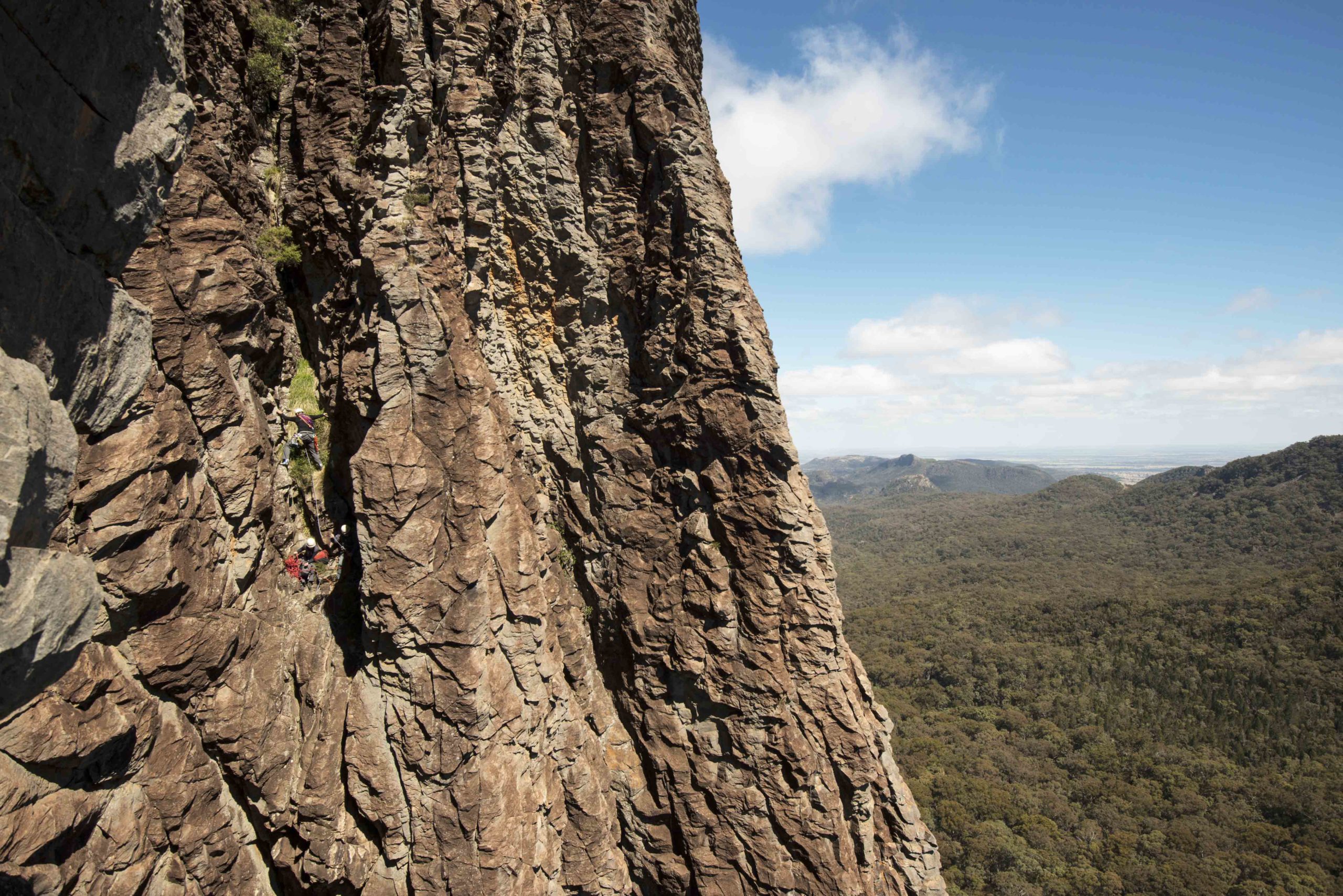
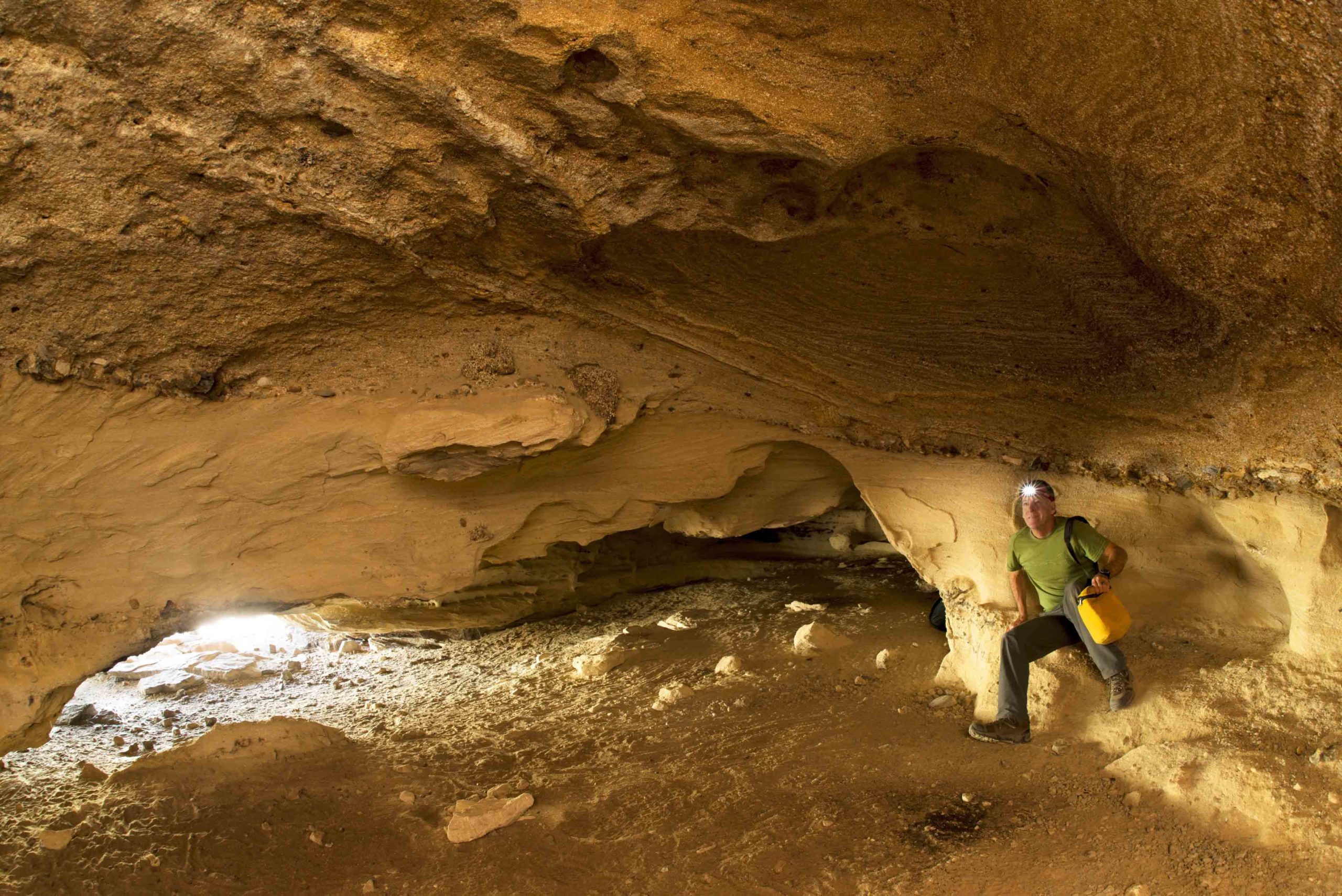
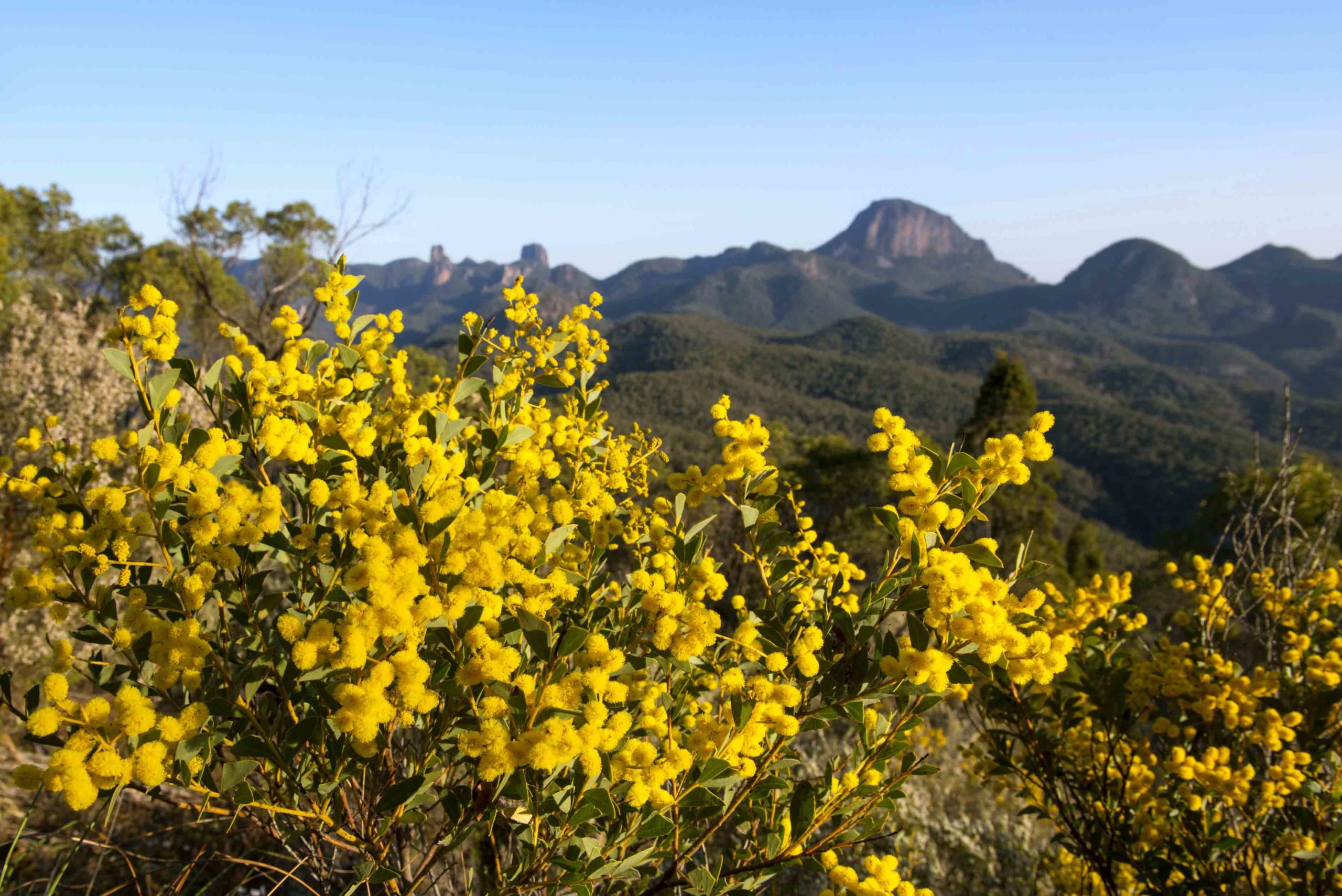
“She would have been a pretty hairy place about 13 million years ago,” John Whitehead says. Author of several books on the geologic and human history of the area, he joined the national park trust in 1972 and has been involved in management and conservation ever since.
From a hill above Camp Blackman, one of three main camping areas, John describes the scene that would have stretched out in front of us before the volcanoes that shaped this landscape erupted, creating the mountains we see today. “All this here, you chop a kilometre off the top and you’ve got a sandstone plateau,” he says. “Ninety per cent of the park is sandstone.”
The 2km-thick sandstone layer formed from sediments that settled at the bottom of the vast Pilliga Sea. This shallow inland lake system covered the landscape about 150 million years ago, when dinosaurs walked among the ferns and pines. “I found a trilobite [fossil] years ago, just here, and I can’t find the bastard now,” John says.
Compressing 150 million years of history into a few minutes, John describes the way the Australian continent drifted back and forth over a volcanic hotspot (now under Bass Strait), creating, in succession, the Glasshouse Mountains, the Bunya Mountains, Mt Warning, and the Nandewar Range (now Mt Kaputar National Park) before it fired up the Warrumbungle area 17–13 million years ago. A shield volcano about 1km high and 50km across resulted, and lava spewed and oozed in thick plugs, cooling slowly to form the fine-grained trachyte we see today. The shield volcano has long since eroded away, but the plugs, dykes and cones remain. They are the distinctive features for which the Warrumbungles are known, and they include the iconic 90m-high slice of jutting trachyte dubbed The Breadknife.
